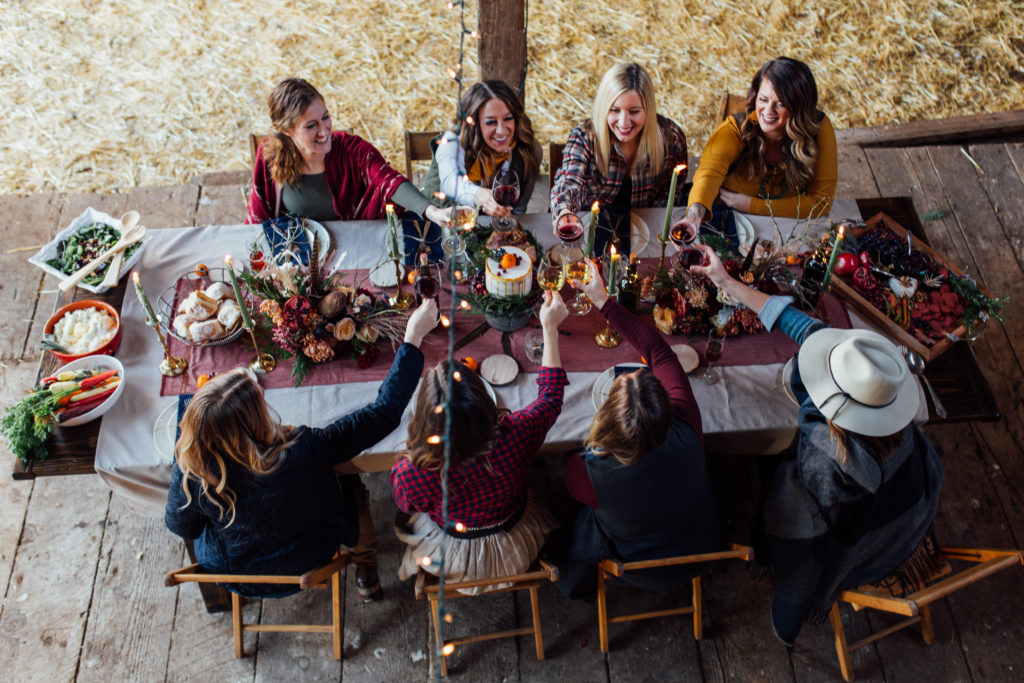
Buddymoons Are the Biggest Trend in Travel. Here’s How to Plan Yours.
An expert shares how to have your modern post-nuptial vacay go off without a hitch.

The multi-billion dollar wedding industry is known for fleeting trends that move just as fast as some relationships seem to. But the latest fad coined the “buddymoon” is one we can really get behind. While the traditional honeymoon is typically reserved for newlyweds as a time to celebrate, decompress, and travel as a pair, this modern twist welcomes couples to invite along friends or family for their post-wedding vacay.
The rise in popularity of buddymoons can be seen all over on TikTok, and it may well be tied to the data that couples are choosing to get married much later in life. According to the U.S. Census Bureau, Americans are delaying (or putting off altogether) getting married for longer than before, with the median average age for men to first get married rising to 30.2 years in 2023, and women 28.4 years. There’s been a pretty steady upward trajectory since the 1950s, when the lowest median figures of 22.5 years for men were reached and just 20.1 years for women. And with many couples already living and traveling together by the time they tie the knot, the novelty of a two-person honeymoon may not carry the same cachet.
“Couples have typically traveled extensively together, so this is no longer the once-in-a-lifetime big trip that it once was,” says Elsewhere co-founder Alexis Bowen. “That’s not to say a honeymoon isn’t still special, it absolutely is, but it’s no longer the chance to explore as a couple for the first time. It can also be a time to unite friends and family who haven’t typically had the chance to get to know each other.”

Thomas J. Story
Bowen also believes that there’s a tie between the rise of buddymoons and the popularity of destination weddings. “People are traveling far, sometimes across the world, so the couple extends the celebrations by inviting friends and family to vacation with them post-wedding,” she says. “Weddings can be a whirlwind and a buddymoon provides an opportunity to unwind and spend quality time with close friends and family, which is often difficult during the wedding.”
While it may seem like a ton of extra work to plan a buddymoon in addition to a wedding, there are ways to make it more seamless. Couples can eliminate stress by first making sure to nail down a definitive budget, which can help determine location and activities. They can also opt to use a professional travel planner, which can really be useful when it comes to navigating the logistics of traveling with a big group.

Rylea Foehl
“Flexibility is also key to build into any group plan. I recommend planning half-day activities with joining optional, and leaving the second half of the day free. You can still enjoy quality time together without forcing a minute-by-minute itinerary,” says Bowen.
She also encourages a group plan for dinner. “It’s great to have breakfast included wherever you stay, and have timing be flexible for people to drop in and out, but having a set organized nightly dinner is a great way to regroup after a day of varied activities and connect over a meal,” she says.
Another idea is having the buddymoon take place somewhat separate from the wedding. This privileges a destination that accommodates a big group. Comfortability is key, while also allowing a range of daytime activities so people can spend their days how they wish and regroup in the afternoon or evenings. If the buddymoon is following the wedding, or an extension of the wedding, the location should be close and logistically easy to reach.

franckreporter/iStock
Suggestions Bowen points to in the West include Palm Springs, California, which allows groups jump off to explore Joshua Tree while still having a range of daytime activities and nightlife; Lake Tahoe, California; Sun Valley, Idaho; Moab, Utah; Taos, New Mexico; and Sedona, Arizona. The common thread of these destinations is the varied experiences that are suitable for a wide range of ages and accessibility.
“Allowing flexibility and the option to join specific activities will mean a more enjoyable trip for everyone,” says Bowen. “And will also allow the couple some alone time, too.”
